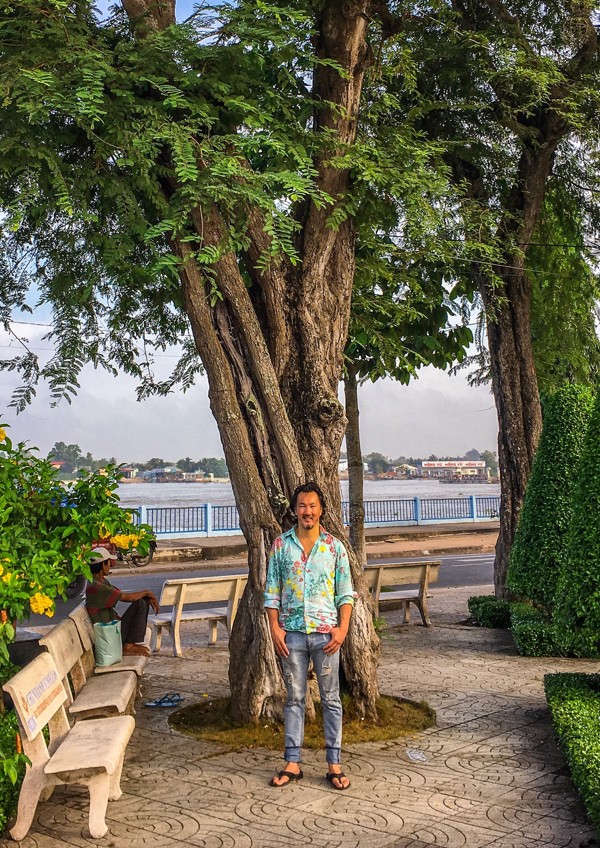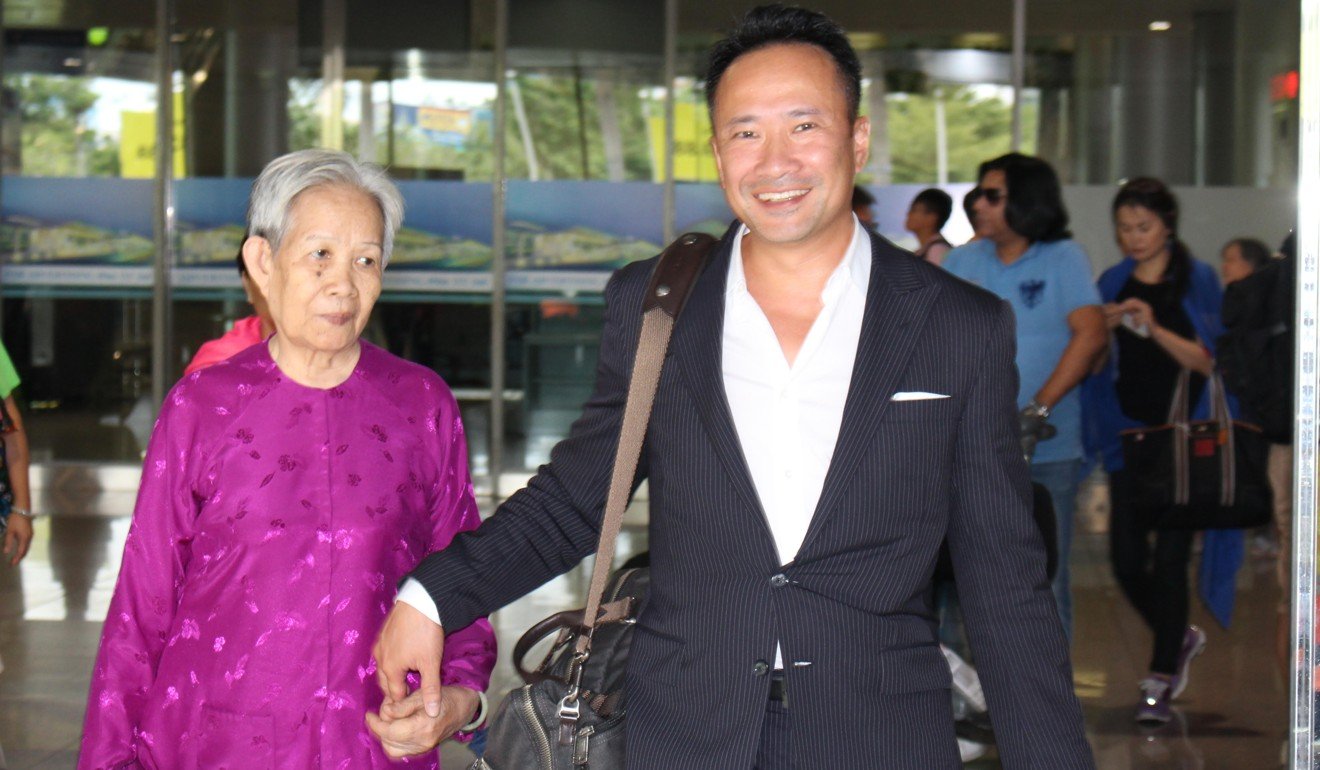
US Operation Babylift ‘orphans’ are still seeking their Vietnamese parents, more than 40 years on
- In the final days of the Vietnam war, Operation Babylift evacuated 3,000 children and took them to the West to be adopted.
- Not all were orphans; many of them, now middle-aged adults, are still searching for their roots
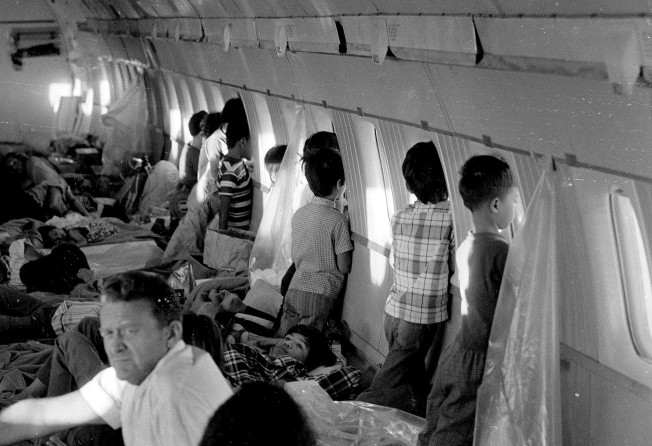
When David Matthew Redmon met his birth mother at Saigon airport, it was as if his own ghost were being laid to rest.
“For more than 40 years, my mother lived with the thought that she had killed her son,” says David, 47, as he recalls finally meeting the woman from his faded childhood dreams.
On that day in August 2015, David had flown to Ho Chi Minh City from Boston, where he was brought up by adoptive parents. He spent most of the 20 or so hours in the air rehearsing every possible scenario, yet still it was not enough to prepare him. As he passed immigration at Tan Son Nhat International he saw an elderly lady dressed in a purple ao ba ba , a traditional South Vietnamese garment, and suddenly it was as if those childhood dreams had come to life. “When that moment came, my emotions simply took over and I cried like a child.”

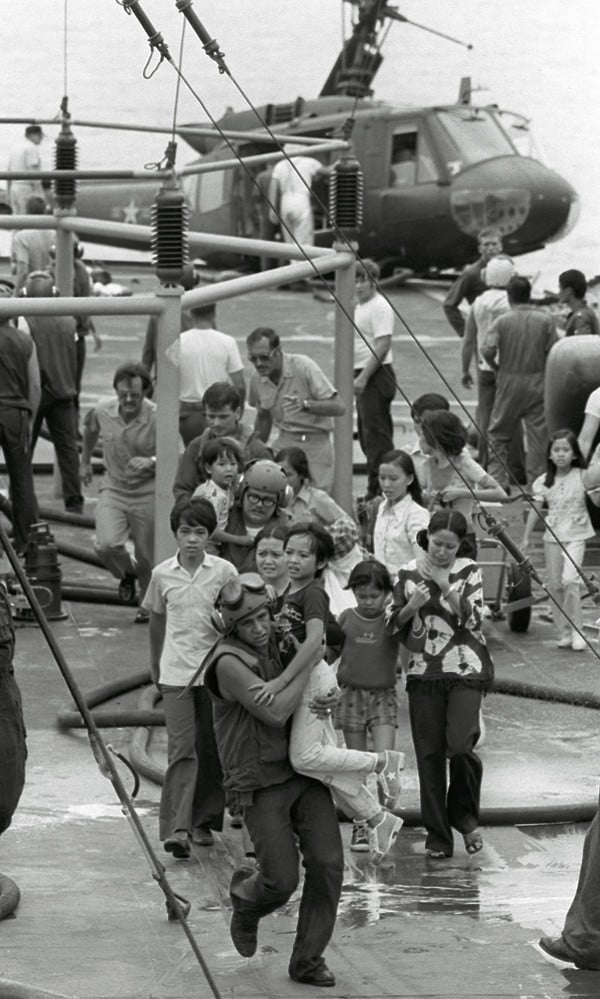
MY MOTHER, THE SPY
David’s mother had been working as a spy for the North in the South Vietnamese military when she gave birth to him at the age of 27.
It was 1973 and the war was still in full swing. She feared that if people learned of how he was conceived – his biological father was an officer in the South Vietnamese army whom she had not married – there could be reprisals against her family. So she kept the birth a secret – so secret that she did not tell even her own family.
This left her as David’s sole caretaker, so when she suffered a stomach illness that required surgery and a hospital stay, she faced a difficult decision.
Her doctor advised her to send David, then 2, to Holt International Children’s Services to be cared for while she recuperated. Seeing few other options, she agreed. She was not told at the time that the agency specialised in overseas adoption and would be taking part in Operation Babylift, though she later worked out the truth for herself.

US President Gerald Ford announced Babylift on April 3, 1975. The next day, the first flight took off carrying 313 people.
Within minutes, tragedy struck. Shortly after take-off, an explosion blew open the plane’s cargo door, forcing the pilot into an emergency landing. The craft came down in a rice paddy, skidding before breaking into parts and catching fire. About half of the passengers, many of them children, were killed.
“When word got out that the first plane had crashed, my mother assumed I was on it,” David says.
The incident haunted his mother for close to half a century. She was convinced she had sent her son to his death, when in fact David’s new life was just about to begin. He had been placed on the second flight that made the journey to the US without incident and was placed with a family in Boston after a short transition period.

“My adoptive family was loving and treated me like their own,” recalls David. “[We] never celebrated my Vietnamese identity, presumably because they didn’t want me to feel different, but I always knew that I was adopted due to obvious physical characteristics.”
While the young David knew he was different, he did not begin questioning his roots until his early teenage years, when he learned from his adoptive parents that he had been part of the infamous baby evacuation. They offered him the only clue they had as to his origins, a document with his birth mother’s name, signature and a few other details.
David’s search for his birth mother took more than 20 years, a period full of great emotional turbulence. A mix of fear and anxiety kept conspiring to make him question what he was doing, and on several occasions he halted his efforts in despair.
Eventually he found a man in Vietnam who helped him find out some details about his mother by tracking her old ID number.
He then took to social media with his new-found knowledge, and with the help of tip-offs found her four months later.
More than four decades after leaving Vietnam, David now feels some sense of closure, for both himself and his mother.
“As a parent myself, I cannot imagine having lived with guilt like she did, and keeping it to herself like that, for 43 years. It makes me very sad to think about what she has suffered,” says David, who is a father of two children.
Still, some mysteries remain. David knows little about his father, though he believes he knows his name: Tran Van Quang.
“My birth mother is hesitant to speak of him. I’m not sure why.”
MR RED CAR
For most of his life, Tony Nguyen knew nothing about his biological father other than his nickname.
“My mother’s family told me they called him Mr Red Car, because he used to drive a red car to come see her,” he says.
Tony’s mother, Duyen Thi Nguyen, had met Mr Red Car while he was working with the American army to find and repatriate soldiers who had gone missing in action. She came from Can Tho City, about 200km west of Saigon, and was working as his cook when they embarked on a doomed love affair. The relationship ended when Duyen discovered Mr Red Car had a wife in the US. Though he offered to take Tony to America with him, she refused.
Tony was the youngest of four siblings, each fathered by a different man, but he was the only one whose father was American. His mother feared this would put his safety at risk as there was a widespread assumption at the time that mixed-race children would not be tolerated in post-war Vietnam, especially those fathered by the enemy.

Shortly before she died of ovarian cancer she made her eldest daughter, Anh, who was 24 at the time, promise to take Tony to an orphanage after her death.
Aged 7, Tony was taken to an orphanage run by the US-founded Pearl S. Buck Foundation, and as part of Operation Babylift he was flown to a foster family in Florida.
He now refers to the family as “the nicest, most loving Christian family”, though at the time he was far less receptive. He felt letting a new family get close to him would be a betrayal of his mother.

“I remember I didn’t want any love or affection or want to touch them. They even sent a counsellor to talk to me and he said there was no hope, I wouldn’t love the family,” Tony recalls.
Over the next three years, he did his best to alienate his new family, often cursing them in Vietnamese and at one point threatening them with a knife.
He stayed with them for just three years, before he was reunited with Anh, the half-sister who had taken him to the orphanage, when she moved to Hawaii with her American husband.
Even then, he held out little hope of reuniting with his father. “I gave up on finding him before I even started. I knew nothing but his nickname.”
Decades passed and little changed until a glimmer of hope appeared in 2015 when Tony and his wife CoraLei visited Vietnam. Tony’s brother suggested they search the records of a church in Ho Chi Minh City where Tony had been baptised and the clue put the couple on the trail of a man called Carl Witzel.
Through ancestry.com, an online genealogy database, Tony and CoraLei found out a wealth of information about Carl including his German roots, his graduation date, family status and when he joined the military.
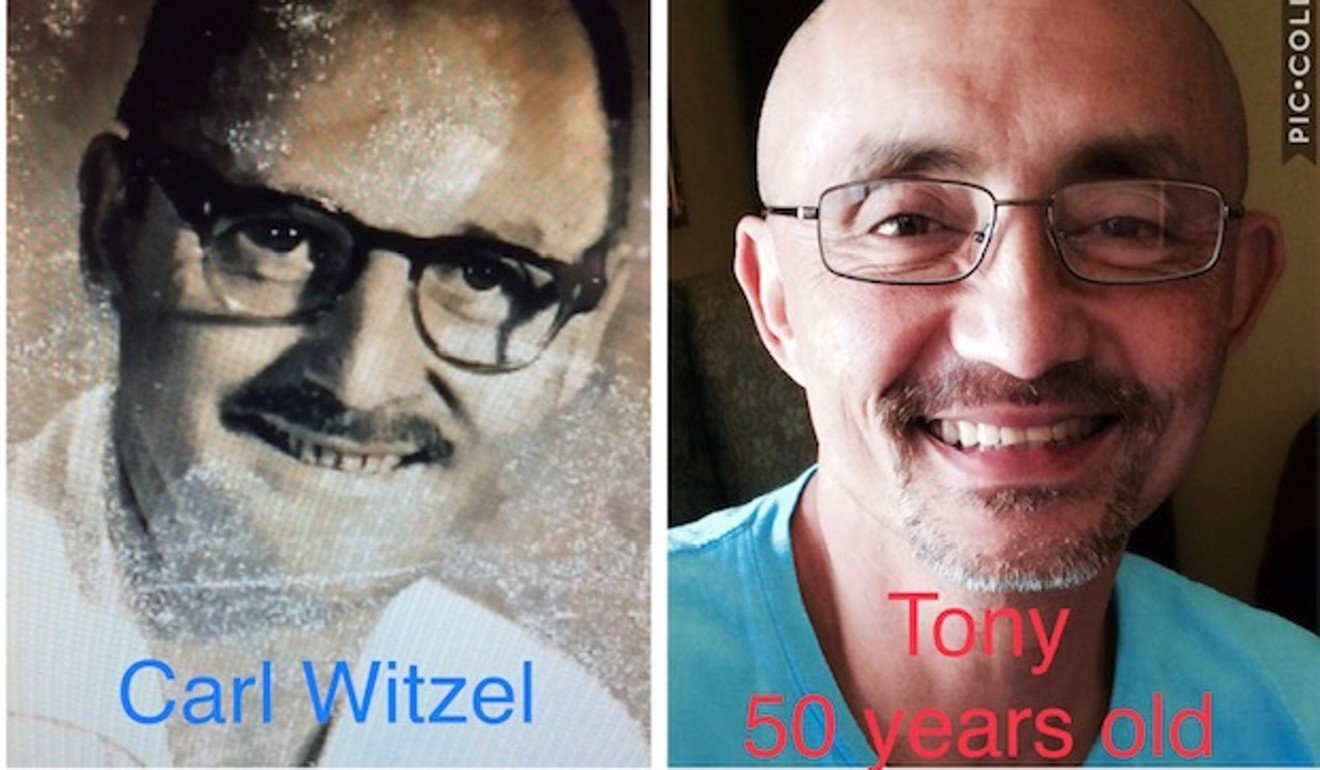
As more pieces of the puzzle fell into place, they were astonished to discover that, at least for a time, Tony’s father had been living on the same Hawaiian island as they were.
After posting appeals for help on social media they managed to track Carl’s family down to Illinois and found they knew nothing about his half-Vietnamese son.
The couple remember “driving to the family’s house in the middle of a corn field, there were so many cars parked in front. A lot of people were there, they welcomed us with open arms”.
Carl’s family showed them around the town, the places Carl was schooled, the house he lived in, and eventually, his grave.
Carl had died of a massive heart attack, 20 years previously.
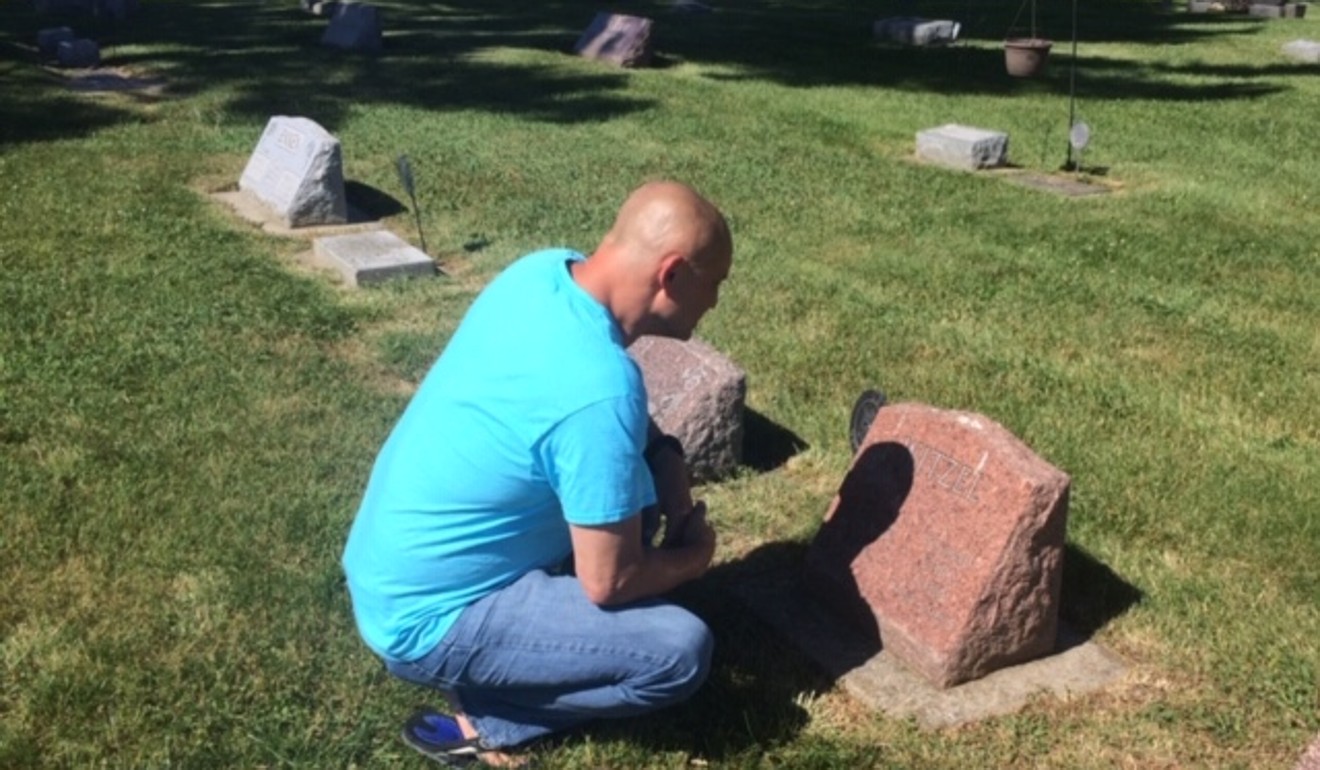
GOOD INTENTIONS GONE BAD
While some regarded Babylift a humanitarian duty, its greatest critics considered it nothing less than abduction.
Many of the children arriving in the US had very little or no documentation, according to California-based paediatrician Dr Alex Stalcup, who at the age of 29 spent two months as the medical director in charge of tending to the health needs of around 1,600 newly arrived Babylift children.
San Francisco’s Presidio, a former army base, served as an impromptu transitional facility where children were cared for before being placed with their adoptive families.
“Many of the children were seriously malnourished, and had scabies, fleas, skin infections, and varicella. There were year-old children that only weighed as much as a four-month-old infant,” recalls Stalcup, now in his seventies.
“About 10 per cent were hospitalised directly on arrival, and we had many ambulances brought onto the airport tarmac.”
One case in particular has stuck with Stalcup: that of “Dorothea D-18”.
“She was a very sick little girl. She was severely underweight and had ear infections and skin infections, and was immediately hospitalised.”
She died a week after arrival, the only death in Stalcup’s medical operation.
“Every year or so, I go to her gravesite to honour her.”
The children were provided medical care, food, psychological counselling and a place to stay; mattresses lined up in a gymnasium. Each child was attended to around the clock by volunteers working in 12-hour shifts.
About 5,400 people signed up for volunteer duty. Chuong Hoang Chung, one of the few Vietnamese living in the Bay Area at the time, was one of them.
Chuong was 28 at the time (he is now 72), but he still recalls the experience vividly.
“I remember kids wearing a name tag with information about their adoptive parents. It was a special impression. The moment I saw them for the first time, I was worried about them. They did not speak the same language as the families they were going to live with.”
While Chuong had hoped the operation would give the children the chance of a better life, the fact that some of the children were not truly orphans didn’t sit well with him.
“Some of the kids were sent on the plane on the spur of the moment by their parents in the hope they would escape the war and have a better life. They thought it would be easy to get their kids back.”
As history has shown, it wasn’t that simple.
Dana Sachs – author of the book The Life We Were Given , which delves into the legacy of Operation Babylift – says none of the families she has talked to were able to find each other until the 1990s.
Sachs, who has written about Vietnam for more than 20 years, thinks Babylift was well intended even if its execution was lacking.
“[It] was not a criminal operation, but a botched operation. Documentation was, in many cases, very bad,” she says.
For many of the children, this lack of records has made finding their birth parents next to impossible.
STILL SEARCHING
For Arjen Ijff, 44, closure is little more than a dream. He was airlifted to the Netherlands when he was three months old and has not been able to find either of his birth parents.
Conjecture is all he has.
“I have no blue birthmarks on my buttocks like many Vietnamese kids, so I think I have mixed blood, either half-Korean or American,” he says.
According to the documents Arjen has, he was abandoned at the Good Shepherd Nunnery and Orphanage in Vinh Long City, 132km east of Saigon. Soon after, he and some other children were taken to the Dutch Embassy in Saigon by Father Peter Aarts.

“He drove a van and took some of us to the Friends of the Children of Vietnam. This was a large orphanage in Go Vap District run by Roman Catholic nuns. From there, the orphans were distributed to several adoption agencies and the embassy.”
Eventually they were taken under the wing of the Dutch ambassador’s wife, Caroline van Roijen. Two weeks before the end of the war, he and another 27 children were flown to the Netherlands where adoptive parents were waiting for them.
Growing up in a white, Dutch community in Beemster, in the north of the Netherlands, Arjen stood out, but it didn’t bother him because his family didn’t treat him differently. Nor did they incorporate Vietnamese heritage in his upbringing.
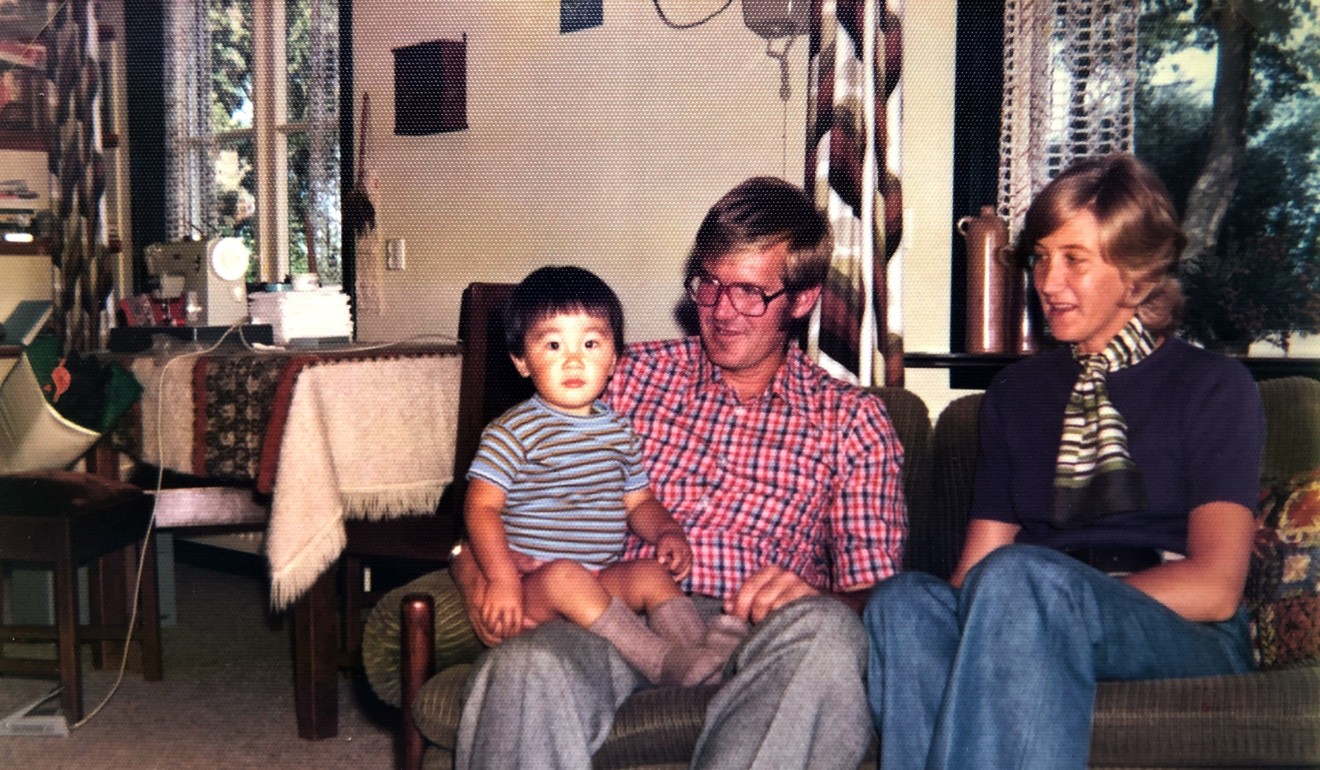
In his thirties, the feeling of being something other than Dutch began to kick in, though it took him a year of hesitation, doubt, and finally excitement before he booked a flight in 2007 to make his first visit to his country of origin.
“I thought that if I didn’t like Vietnam, then starting a search for my parents would make no sense,” Arjen says.
He describes the emotional calculation as “self-protection”, though he needn’t have worried. Vietnam welcomed its long-lost son with a warm embrace.
“When I arrived in Hanoi and felt the ground beneath my feet, I felt relieved. Like stepping into a warm bath,” he says.
Since that first visit Arjen has advertised his search for his birth parents using fliers and by telling his story to local newspapers, but more than 10 years on he remains no wiser as to their identity.
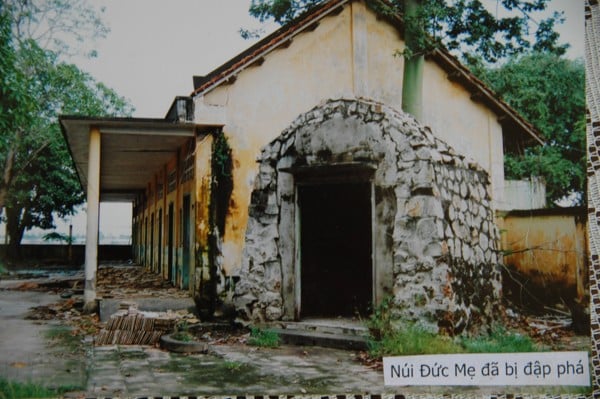
In 2018, he made a breakthrough of sorts, finding a Tamarind tree by a river. He believes it is the same tree that appears in a photo he has of the orphanage, which was demolished after the war. He says it is “the only witness left and has a symbolic meaning for me”.
He believes his biological mother had the best intentions when she left him at the orphanage.
“I would forgive her, if I ever met her,” he says. ■
